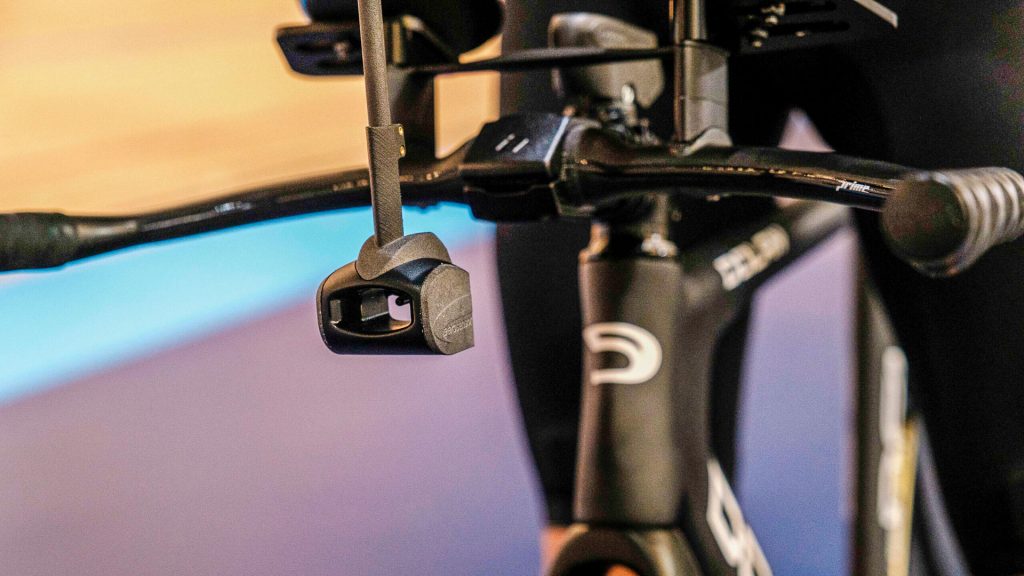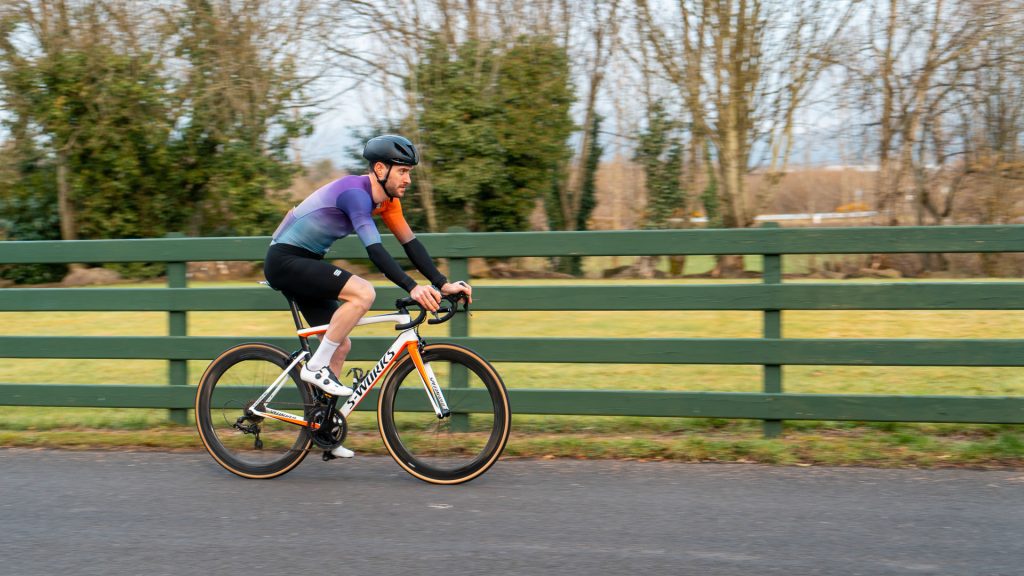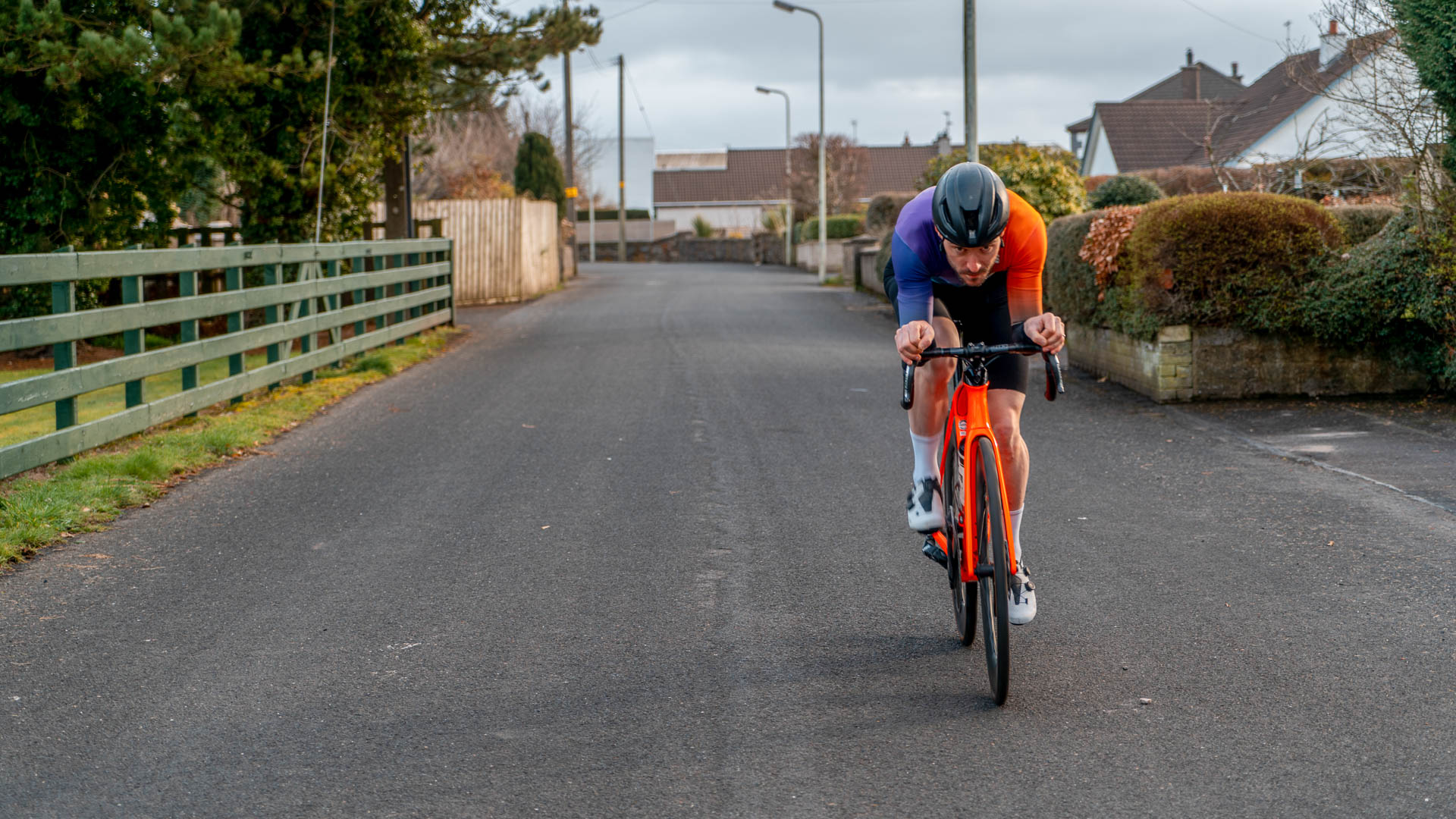Aero and cycling. I love it, but god help me, I hate it at times. As a tech writer, I feel I should provide clarity in a world full of confusion, but with so many variables, the attempt can often mean creating more confusion.
We’re going to try to fix that. Slowly, methodically, and with the humility required given the complexity of the task at hand.
We have a remit to provide the content my beat demands, and I want to create an aero resource that like-minded riders can lean on to differentiate the marketing from the reality, the yaw from our collective yawn, if you will.
I’m not talking about an aero 101, or my fastest position, but rather an aero-testing leaderboard for frames, wheels, helmets, skinsuits, or anything we think may save or cost a few watts. Think Top Gear Power Lap but ranking bikes and kit by watts saved rather than ranking cars by elapsed time.
How would it work?
Good question. My theory is, I could use an on-bike aero meter (a technology pro teams are turning to in increasing numbers) and a fixed protocol to conduct comparative testing and rank bikes or kit based on their real-world end-user aerodynamic performance. Given that I am lucky enough to test numerous new bikes, wheels, and all sorts of equipment, I could quickly build a comprehensive aero leaderboard for several different product categories.

You may be thinking: “Great idea! But why has no one done this before”? If so, great question. As far as I can tell, there are two reasons no one has done this already: 1) aero testing is flipping difficult, and 2) perhaps more importantly, I’m not even sure if this could work.
Aero testing is notoriously difficult/complex/time-consuming/frustrating (pick any/all you find relevant), and that’s just comparing time trial positions for one rider with one bike on one day. To be fair, testing a handful of helmets has become relatively simple, but, for example, take road bikes and consider testing multiple bikes across months or years and the mountain of variables that adds to the mix means creating an accurate comparative ranking is simply impossible.
Devise a real-world aero ranking system? Sounds like a nightmare, and I love it.
Still, given the aero focus on so many new product releases, I can’t escape the feeling I should provide some objective aero assessment in the products I review for you. As such, I propose you join me on an aero testing journey. I can’t promise we will get anywhere, but I’m sure we can pick up a thing or two along the way.
Wait a minute: we just established long-term comparisons between various test bikes are mostly worthless, but I am going to do it anyway? Not quite. What if we don’t compare new test bikes to each other, but rather compare new bikes to a baseline bike? A bike that exists solely to be an aero-testing reference point and remains identical from test to test. If we then compare new test bikes to the baseline bike on a given day and single test session, could we then create a new bike ranking based on the delta between baseline and test bikes? It’s effectively an iteration of the “ABAB” aero testing protocol the experts and pro teams have used for years, where A is the baseline and B is the intervention on test.

We could use a single power meter with proper at-home calibrating across all bikes and tests. The same route for all our testing. Use control tyres and tyre pressure, and add in a control wheelset test. We could decide to always use latex tubes and have some form of control for drivetrain parameters. We could control and replicate rider position on each bike and double check this with body position sensors. And initially prove the concept with simultaneous Chung Method testing.
It sounds like a nightmare, and I love it.
If it works, we could have a Power Lap leaderboard for new bikes. We could give it a catchy name, something like the “Escape Collective Pedal Powered Bicycle Testing Aero Comparison Lap” leaderboard. We could have the same for wheels, helmets, kit, cargo bikes?
Again, I’m not sure this can work. For instance: what if the differences between bikes are too minute to measure in the real world? There are also a host of other questions. How do we control tyre pressure should rim width vary from control wheelset to test bike wheelset? Or, how real world is too real world? My head says I should test a bike in my standard, upright road position, but what if the geometry of one bike forces me more upright and hence into a less aerodynamic position? On the one hand, I should be less aerodynamic on the more upright bike, but “your mileage may vary.” Regardless, I want to try and, at very least, share my aero learnings from the experience.
Perhaps we’ll just end up with something like the dreaded (WET) asterisk on the Top Gear lapboard, where everybody knows it’s not the end-all, definitive assessment. But that didn’t stop The Stig from having some fun finding out how the latest cars will go, and it shouldn’t stop us from trying.
Depending on our success, what follows over the coming months will either form the basis of an aero leaderboard I know I’d love to exist or the makings of a “misadventures in aero testing” feature.

Why are we trying?
Many readers will know of my particular fascination with the opportunity “tech” can offer in improved performance. I am pretty certain this fascination stems from two distinct places. Firstly, as a lifelong Formula 1 fanatic, you’ll find aerodynamics and performance optimisation in the overlap of my sporting interests Venn diagram.
Secondly, as a wannabe pro cursed with just enough talent to convince me I should invest my entire early adulthood into “chasing the dream,” but ultimately not enough to see it become a reality, I was an early adopter of the so-called marginal gains philosophy. Skinsuits in road races, shrink-wrapping helmets, aero pedals fashioned out of duct tape and cardboard; no potential aero hacks were off the table in the pursuit of saving the watts I couldn’t manage to generate. Whether I actually needed more watts, or just more strategery, is another matter entirely.
There has, though, been one recurrent hurdle throughout my decade-and-a-half-long fascination with aerodynamics. That hurdle is making sense of it all. At first, it was simple: if it’s teardrop-shaped and looks fast, or at least has no wrinkles, it is fast. Things got a little more confusing along the way with truncated tubing, u-shaped rims, frontal profiles and trailing edges. Wait, so even though my back is flat, my head is acting like a kite? Seriously? That rider behind me might be improving my aerodynamics?
Fast forward to 2023, we now live in a sport where manufacturers tout aero savings with almost every new product launch. If I were to take the aero claims for every bit of equipment and clothing on my race setup, I’d either be harvesting watts and solving the world’s energy problems or approaching the year 1975 at 45 kph and 5° yaw. I’m far from the only one questioning some of these aero claims.
Let’s see if we can clarify some things.
What did you think of this story?


